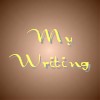
May 28, 2006
|
I'd like to thank a couple of you I've met on your feedback. I'll put up some summaries of what we talked about in my next blog because I think there's some valuable information that needs to be addressed. What do you notice first when you look at a piece of art? I've seen some disturbing answers. Some say "the frame" to draw them to the art. Others say "the light". Still others say "just what catches my eye". I asked several people that question this past week, and I never heard the right answer. Many artists out there will realize I'm talking about the focal point (which also exists in writing, and I'll talk about that further down). That's the point within the art to where your eye is drawn. Or, as I was told more often than not this week, "just what catches my eye". The other two responses I mentioned above were disturbing because, simply, the frame or light became the focal point. This actually distracts from the art. Frames are not meant to be noticed, but to draw your attention inward toward the piece. A frame or light that is obvious will be remembered; it is the art that should be remembered, instead. With that, I list the five biggest mistakes made when displaying art, using the acronym FILMS: Frame. A good frame will seem to blend in, making a semi-gradient into the work. Anything offsetting is a distraction, such as a red frame around a blue painting on a black wall or a wood frame on metal. Interior. If you push the art into an inset or recess, this can actually cause the viewer to miss the piece or see it wrong. The edges of the recess may cause a shadow that makes it look different. That brings us to . . . Light. Good lighting is never too bright or too dark, and never overpowers the rest of the room. It is never so obvious it draws attention to the art; the art should draw attention to itself. Shadows can be a real killer. Light brightens color; shadows darken it. Matting. Probably the worst-handled display technique of all. It is far too easy for matting to be too large; this will separate the art from the frame and create a contract that distracts from the art. Remember, contrast, brightness, and size all contribute to a focal point. Showiness. If you set up a display to focus on the art, you make the fact that the art is actually there more important than the art itself. when this happens, the art goes unappreciated. In writing, the focal point, in this case called the focus, is established through effect. Effect, in turn, is caused by change within the story. You've probably heard the terms "protagonist" and "antagonist". These two terms are rarely defined correctly. The protagonist is usually, but not always, the main character while the antagonist is usually, but not always, the "bad guy" of the story. In literature, we are taught the protagonist is the one attempting to accomplish a goal, while the antagonist opposes the protagonist. This is closer, but not completely accurate. The protagonist of a story is the character that causes the most change. Likewise, the antagonist tries to stop that change. In the classic good guy-bad guy stories, the "bad guy" is actually the protagonist because he is attempting to do something that will change everything for the worse. Since the "good guy" is attempting to stop him, he is the antagonist. Two excellent examples of the protagonist as main character are from the same work: Palpatine and Princess Leia from Star Wars. Leia led the Rebel Alliance to destroy the Galactic Empire and restore the Republic after Palpatine took over. Palpatine was the protagonist in Episodes I-III, while Leia became the protagonist--and Palpatine the antagonist--in Episodes IV-VI. Both protagonists, both facilitators of change. But what was the focus? Focus is created by how changes affect the story as a whole. What, therefore, was the focus of the story? The changes in the story most affected the galaxy as a whole, but even more, the nature of its ruling body. During six movies, the Galactic Republic turned into an emergency council with a single leader, then empire, then war-torn battleground, and finally into . . . what? We never found out. George, this is why we need Episodes VII-IX. Or, at least, you could give us an idea at a convention or in an interview. Still, the nature of the rulership of the galaxy was most changed by events, making that the focus. Not the war, not the characters, not the worlds involved. The story was the history of this great change told through the eyes of the family and friends of Anakin Skywalker, not as the story of Darth Vader--the key protagonist throughout the six movies. So, what cannot be a focus? Nothing. I saw Monsters, Inc. a couple nights ago, and the focus was the company. In The Lord of the Rings, it's the character Frodo Baggins, one of the most tragic characters of all time. How one seemingly insignificant event can change everything is the theme of It's a Wonderful Life, but the focus is on the life actually lived, a theme originally used in A Christmas Carol and reused several times in such TV shows as That '70s Show and Married . . . With Children, although the latter took a completely different approach. Like I said, I'll be discussing some of the feedback I've gotten next week. Talk to ya then!
|






